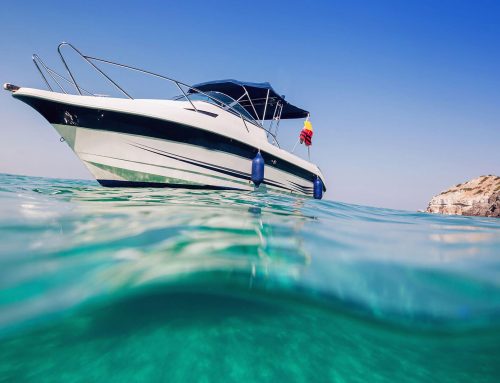Is it normal for a single boat to have more than one bilge pump installed?
It’s very likely that the average boat builder has installed multiple bilge pumps during the building of your boat. They are usually installed in the area or areas where water collects in the bilge. It’s common sense to the average builder to install multiple bilge pumps because they are inexpensive and generally have poor longevity. So from a safety standpoint, allowing for one pump to fail and another as a backup is just good seamanship skills. Bilge pumps are primarily a safety device and are designed to move a high volume of water, in order to maintain vessel flotation in emergency situations.
Bilge Pumps Have Poor Longevity
Bilge pumps are very poorly designed to handle the day-to-day moisture aboard the average vessel, where small amounts of water find their way in and gather in certain low spots. In the marine industry, we call this “residual bilge water.” The average broker or boat salesman is not very comfortable about discussing this negative feature inherent in almost all boats. Their level of discomfort is high enough that they will usually resort to doing something about it, like passing a common wet vac around from boat to boat, early in the morning at a boat show, to prepare the boat for its many showings during the day. Is this one of those dirty little secrets in the boat business? Many of the cleaning crews that come in at 7 or 8 in the morning for a 10 AM boat show and perform this bilge duty as well. But once you sign the contract and take delivery of your new found pride and joy, reality starts to set in. Initially, we are so happy and excited with our new boat, and are busy learning how to operate it and all of its systems, and to entertain our friends that we overlook some issues. But over time, a little dirt, fuel, oil etc. starts to mix with the residual bilge water, microbes find their way in, and then in those dark, very damp insides of our new boat, something starts to happen. It’s what we call the condensation cycle.
The Condensation Cycle: Simple Physics
If you were to take a large Tupperware container with a tray shape, pour a half inch of water inside, sprinkle a little dirt and oil inside, seal it and place it out in the sun, what would happen? Condensation droplets would eventually start to form on the inside of the lid. When it comes to our boats and wet bilges, it’s pretty much the same result. The sun beats down on the hull and decks, radiating heat, which permeates into the interior air. The evaporation of the bilge water accelerates as the air warms. Then, later in the day as the sun sets, the air below cools and passes dew point. Condensation droplets or dew starts to form all over your beautiful new boat. This is the aging mechanism that will transform your whole boat over time into an unreliable, smelly old boat that you no longer want, and no one else wants to buy. Rapid depreciation: it’s a common finding when you board your boat early in the morning and raise the cockpit hatch, and as it swings up on its hinges, you see large drops of water running down into the gutter. It would be nice if these drops of water only formed on the bottom side of the hatch, but we know that this moisture is getting all over absolutely everything on board. It is as if there were a little gremlin down below with a fine mist garden hose, spraying water on everything a few times per day.
So what, what’s a little water going to do to my boat?
True, the builder certainly used marine grade components and finishes in the lower compartments
Regardless of how much money the builder spent on marine grade wiring, stainless steel fasteners, marine coatings etc., none of this is a match to this constant attack of heat, humidity and condensation droplets. This gets into the electrical connections. Just ask any marine electrician, and they will tell you about the failed electrical connection that was cut open to reveal black or green powder as the tin plated, multi-stranded copper wire failed and then started the snap-crackle-pop scenario, as the lights started to flicker and then a week later just quit altogether. That same thing happens with the stereo, pumps, generator, gyro stabilizer and everything else below. The droplets allow mildew to grow, followed by mold in the dark bilge water creating that mature vessel smell which starts to rise up out of the bilges, overtaking the living areas of the boat. As paint starts to flake and mildew starts to grow, it is easy to just blame all of this on the fact that the boat is simply getting old.
Are you ready to say “Please give me a solution”, I still love boating?
Yes, the Arid Bilge System is designed to move water overboard like a bilge pump, but that’s where the similarity ends. The Arid Bilge System is a true vacuum cleaner system where, like a wet vac, it suctions water into a small collection chamber, like a miniature wet vac. Like the wet vac, it does not stop until all of the residual bilge water is removed. And better yet, one Arid Bilge System will do all of your different bilge compartments inside the boat. Yes, you will need to leave the standard, factory installed, bilge pumps in place to let them do what they were designed to do: move a large volume of water if and when needed. Yes, in the rare event that your boat is taking on a lot of water, the Arid Bilge System will be of little help.
What changes can I expect aboard, once the Arid Bilge System is installed?
- No water in the bilge, and we really mean dry parched without moisture dry.
- It’s a leak detector. Small leaks are now are exposed, leaving wet or oily trails back to the source(s).
- Clean out the mold and mildew one last time, it won’t be regenerating
- The conventional bilge pump will now have a much longer life, as it no longer sits in water, expect 10 to 15 years instead of 2 to 4.
- The moisture in the fiberglass laminates will return to the bilge and evaporate away, greatly reducing the possibility of osmosis, blistering and small hull cracks from winter freezing.
- The resale value of your boat is greatly enhanced, as it looks like you slaved over the boat keeping it clean and well serviced, when all you did was buy and install the right tool for the job.
- Without the mold and mildew growing below, the odors are no longer infesting the living areas, meaning fewer health issues for the elderly and the young.
- And most importantly, the peace of mind and spending more time enjoying your boat, not laboring over it.



